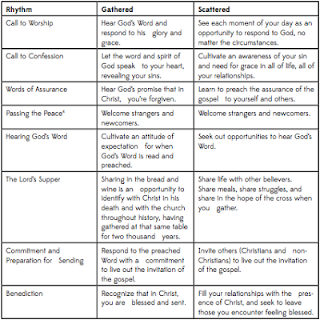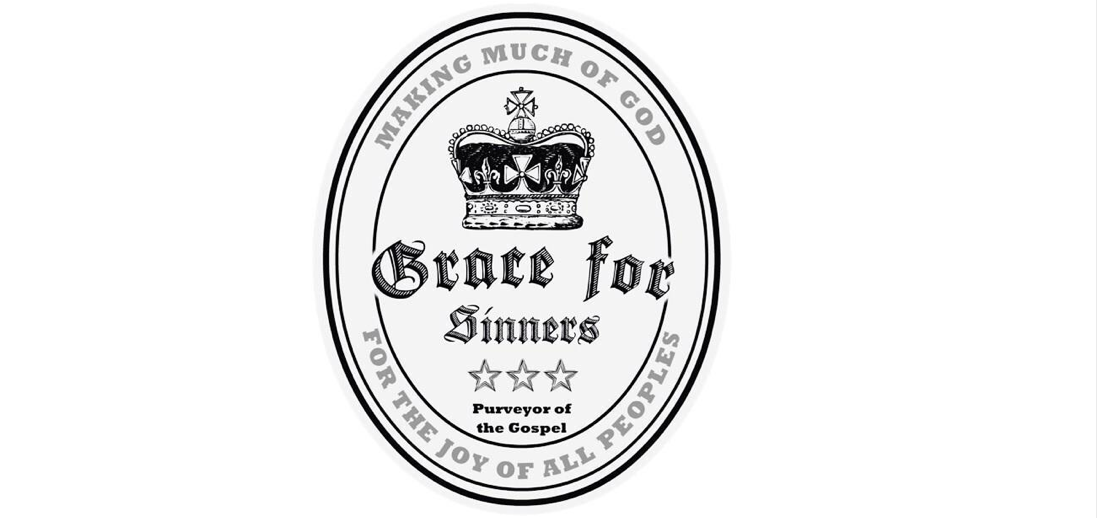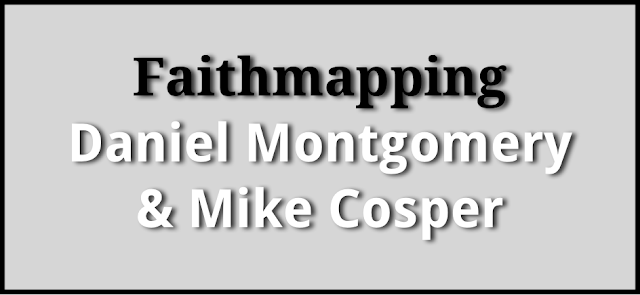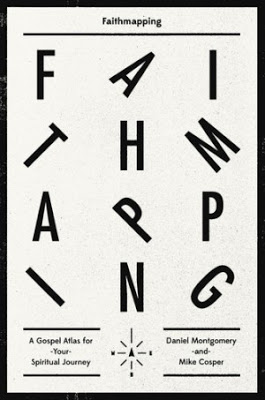4.5 out of 5 Stars
Author: Daniel Montgomery & Mike Cosper
Publisher: Crossway
Buy Faithmapping
Reading Level: Easy
I usually don’t include blurbs about books in my review but this sums up the book so well: “The missional focus of this contribution to the gospel-centered movement is a breath of fresh air” Ed Stetzer (“The gospel that saves us motivates us to live on mission” [p. 19]).
Montgomery and Cosper have sought to provide a map of the gospel within a missional framework. The book separates neatly into three parts: gospel, church, and world. As they concisely explain, “[Faithmapping is] an exploration of a whole gospel for a whole church for the sake of the whole world” (p. 17).
Part 1 tackles the under-estimated and under-appreciated gospel. They’ve argued the church has argued for parts of the gospel successfully but rarely has she put all the pieces together. They argue for three components for a whole gospel: kingdom, grace, and cross.
In regards to the kingdom, says Montgomery and Cosper,
The gospel of the cross focuses on what you might typically see emphasized (justification, reconciliation, righteousness, sacrifice, and union with Christ) in Reformed circles.
I wanted to share a descriptor from each of these gospel pieces to give you a taste of what you can expect in these sections. My only thought in these section was, “I think they’re right, but I wonder if they might have missed the unifying element?” God’s covenant in Christ encapsulates all of these gospel pieces. It’s the glue. God makes a covenant as a King ruling his kingdom bringing peace by the terms of this covenant through justification, freeing former rebels and slaves, and making them sons and daughters. Just a thought.
Part 2 talks church. They argue the gospel “changes us from the inside out” (p. 24) and, therefore, the church is called to go out with the gospel (part 3). In the section about the whole church, they cover worshipers, family, servants, disciples, and witnesses. They argue the gospel has changed the how and where of worship. There’s a strong emphasis on missional worship (gathered vs. scattered) a point which I loved. They discuss the benefits of an explicit liturgy and connect that with our daily living (see chart A). I had never made this connection and found myself meditating on the implications. Consider how the liturgy of your church lends itself to strengthen your gospel living when scattered. In much of this section, the categories mentioned at the start of this paragraph are unpacked in terms of living the “resurrected life” (pp. 168-69) outside of the confines of the church. Living on mission.
Part 3 examines the different “locations” (loosely defined) where we live these truths out (home, work, recreation, restoration, and multiplication). After the relatively large amount of space spent on gospel and church, I felt this last section needed more. I wanted more from it. The content in it was good, but it could have been explored more fully.
Faithmapping is worth reading and reading well. The conversation surrounding the gospel isn’t going anywhere so it’s important we understand the different arguments being made and how they actually fit together. This book could be used with great results as a study for a group of elders. But it could also be used in a lay small group. The outline is precise which makes staying on track while reading easy. Plus the topics discussed are essential for Christian living and are presented in a way that lends themselves for in-depth discussion.
A free copy of this book was provided by Crossway. If you plan on purchasing Faithmapping, consider supporting Grace for Sinners by purchasing from Amazon.
Author: Daniel Montgomery & Mike Cosper
Publisher: Crossway
Buy Faithmapping
Reading Level: Easy
I usually don’t include blurbs about books in my review but this sums up the book so well: “The missional focus of this contribution to the gospel-centered movement is a breath of fresh air” Ed Stetzer (“The gospel that saves us motivates us to live on mission” [p. 19]).
Montgomery and Cosper have sought to provide a map of the gospel within a missional framework. The book separates neatly into three parts: gospel, church, and world. As they concisely explain, “[Faithmapping is] an exploration of a whole gospel for a whole church for the sake of the whole world” (p. 17).
Part 1 tackles the under-estimated and under-appreciated gospel. They’ve argued the church has argued for parts of the gospel successfully but rarely has she put all the pieces together. They argue for three components for a whole gospel: kingdom, grace, and cross.
In regards to the kingdom, says Montgomery and Cosper,
It’s an incredible plan. The ruler of the kingdom suffers for the subjects. He humbles himself and lives among them, suffering under the same injustice, encountering the same competing kingdoms. Jesus encountered the authority of the kingdoms around him, all the while preaching that God’s kingdom was here, and was greater than all these others. He suffered under Pilate’s kingdom. He suffered under religious corruption—a kind of kingdom. He suffered under Satan’s kingdom, subject even to death. Yet in humbling himself, he flips the whole world on its head, and this crucified and downtrodden one becomes the name exalted above every name. (p. 38)This section has a strong focus on repentance (“change our allegiance” p. 40).
The gospel of the cross focuses on what you might typically see emphasized (justification, reconciliation, righteousness, sacrifice, and union with Christ) in Reformed circles.
The cross is not peripheral. It’s not something that we encounter at the beginning of our Christian journey and move beyond as we mature in discipleship. It’s the center of our faith, the hub from which every good thing flows. (p. 65)The gospel of grace wraps up the whole gospel. They say,
The gospel declares that our right standing with God and our continued life in his kingdom is all a gift of his grace. Life with God comes by grace. The cross is given to us by grace. We have life with God not because of anything we have or could have done or anything we have failed to do but because God has freely given it to us at Jesus’s expense. We are safe, we are accepted, we are loved because God has made it so by his grace. Period. (p. 80)They’re praising the scandalous grace of God that takes dirty, rotten sinners like you and me and welcomes us into his family. The great equalizer. This grace motivates us to live for God.
I wanted to share a descriptor from each of these gospel pieces to give you a taste of what you can expect in these sections. My only thought in these section was, “I think they’re right, but I wonder if they might have missed the unifying element?” God’s covenant in Christ encapsulates all of these gospel pieces. It’s the glue. God makes a covenant as a King ruling his kingdom bringing peace by the terms of this covenant through justification, freeing former rebels and slaves, and making them sons and daughters. Just a thought.
 |
| Chart A |
Part 3 examines the different “locations” (loosely defined) where we live these truths out (home, work, recreation, restoration, and multiplication). After the relatively large amount of space spent on gospel and church, I felt this last section needed more. I wanted more from it. The content in it was good, but it could have been explored more fully.
Faithmapping is worth reading and reading well. The conversation surrounding the gospel isn’t going anywhere so it’s important we understand the different arguments being made and how they actually fit together. This book could be used with great results as a study for a group of elders. But it could also be used in a lay small group. The outline is precise which makes staying on track while reading easy. Plus the topics discussed are essential for Christian living and are presented in a way that lends themselves for in-depth discussion.
A free copy of this book was provided by Crossway. If you plan on purchasing Faithmapping, consider supporting Grace for Sinners by purchasing from Amazon.



No comments:
Post a Comment